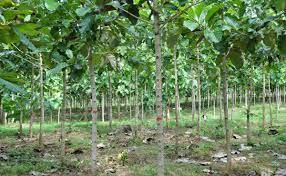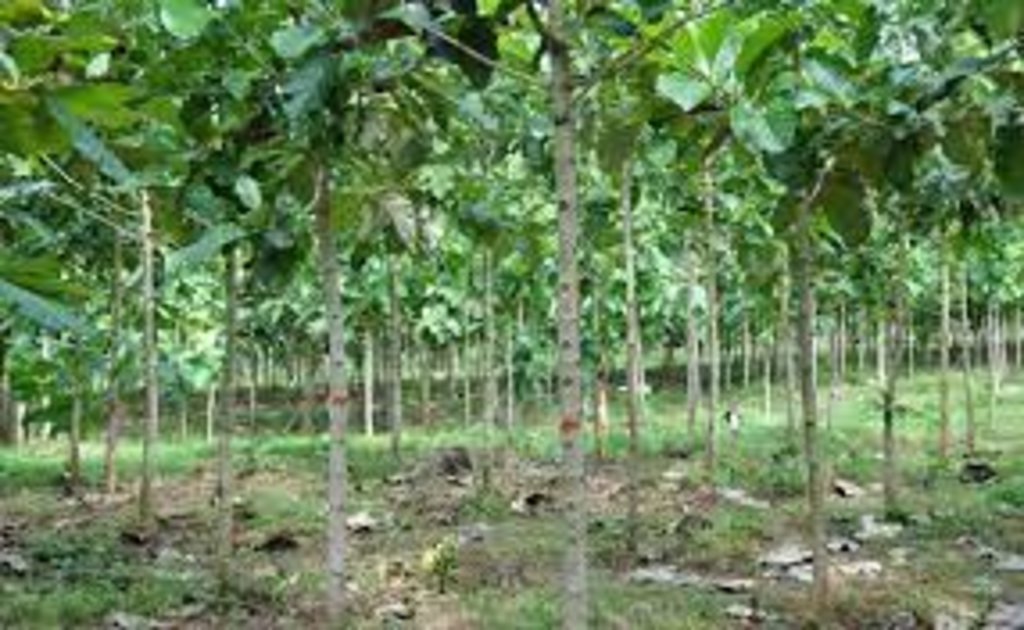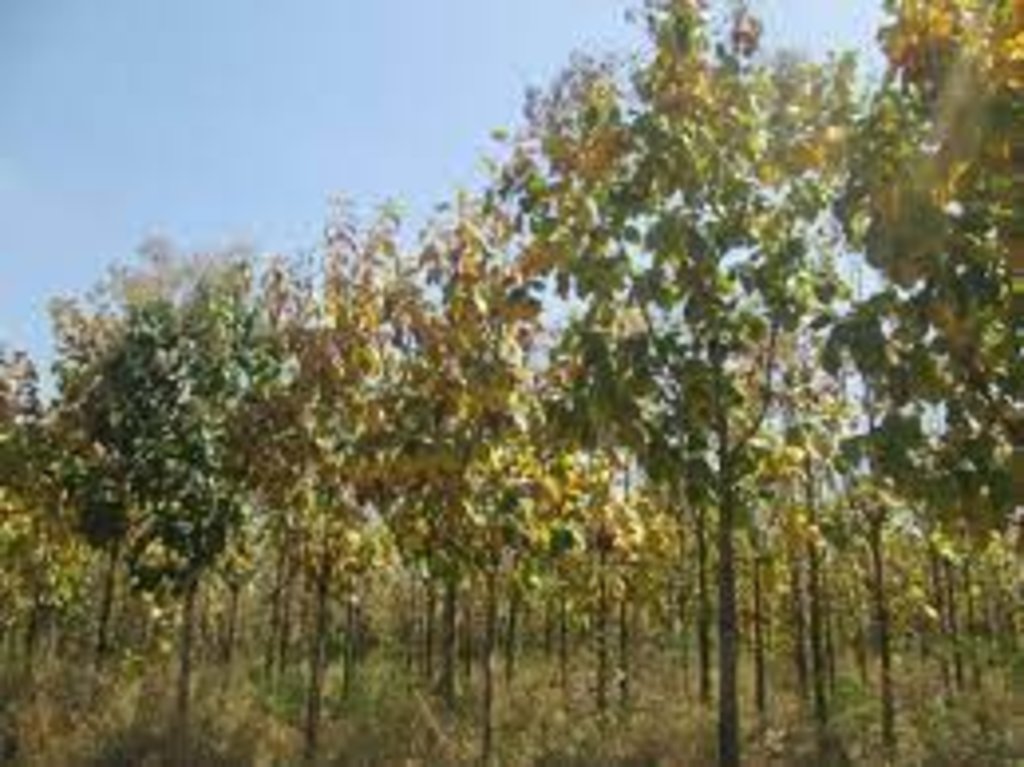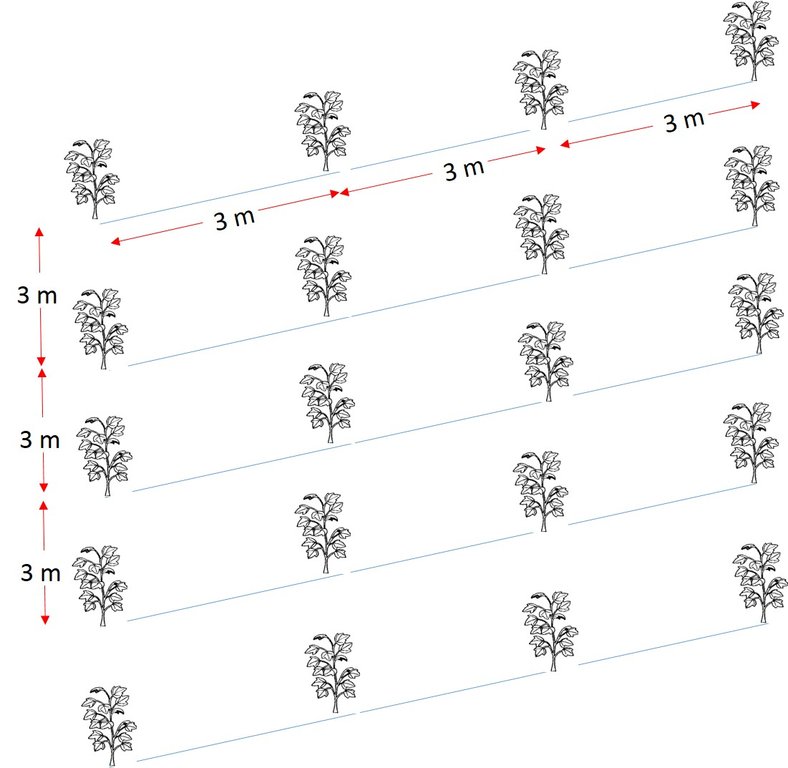TEAK-BASED AFFORESTATION FOR INCOME GENERATION AND TIMBER PRODUCTION [اوغندا]
- تاريخ الإنشاء:
- تحديث:
- جامع المعلومات: betty adoch
- المحررون: JOY TUKAHIRWA, Kamugisha Rick Nelson
- المُراجع: Udo Höggel
pito yen
technologies_2708 - اوغندا
عرض الأقسام
توسيع الكل طي الكل1. معلومات عامة
1.2 تفاصيل الاتصال بالأشخاص الرئيسيين لمصدر المعلومات والمؤسسات المشاركة في تقييم وتوثيق التقنية
الشخص (الأشخاص) الرئيسي لمصدر المعلومات
مستخدم الأرض:
Okot Parkston
0782406820
Lamwo district local government
Padibe west Sub county, Ywaya parish
اوغندا
اسم المشروع الذي سهّل توثيق/تقييم التقنية (إذا كان ذلك على صلة)
Scaling-up SLM practices by smallholder farmers (IFAD)اسم المؤسسة (المؤسسات) التي سهلت توثيق/تقييم التقنية (إذا كان ذلك على صلة)
CDE Centre for Development and Environment (CDE Centre for Development and Environment) - سويسرا1.3 الشروط المتعلقة باستخدام البيانات الموثقة من خلال WOCAT
متى تم تجميع البيانات (ميدانيا)؟:
12/05/2017
يوافق جامع المعلومات والشخص (لاشخاص) الرئيسي لمصدر المعلومات على الشروط المتعلقة باستخدام البيانات الموثقة من خلال WOCAT:
نعم
1.4 إعلان بشأن استدامة التقنية الموصوفة
هل التقنية الموصوفة هنا تمثل مشكلة فيما يتعلق بتدهور الأراضي، بحيث لا يمكن إعلانها تقنية مستدامة لإدارة الأراضي؟:
كلا
2. وصف تقنيةالإدارة المستدامي للأراضي
2.1 وصف مختصر للتقنية
تعريف التقنية:
Teak commonly refered to as Tectona grandis is preferred as a timber species in Northern Uganda by both small, medium and large scale farmers. A teak plantation is normally established for purposes of providing timber and income but also sequester atmospheric carbon dioxide and act as wind break.
2.2 وصف تفصيلي للتقنية
الوصف:
To establish this practice, the land-user puts into consideration the following: pitting at a depth of 3.5 inch, trees to be planted and spaced at 3 metres x 3 meters using the following inputs: tree seedlings, wheelbarrow, hoes, pangas and labour.
During the process, the tree stems are cut at 30cm length and planted. The stem is placed upright and later covered with soil. If there is adequate rain then some tip of the stem is left exposed but if rainfall is inadequate then the stem tip is covered in order for the plant to have enough moisture for its growth. It takes two weeks for the tip to get exposed on the surface when fully covered. The plant automatically appears with two leave lets.
The leaves when exposed to excessive sunlight can dry up and this retards its growth. This may require watering by the land user. At the early stage, the teak plantation can be inter cropped with beans and other crops such as sesame since the teak plantation has not yet formed a big canopy. This can be done for two years and later only slashing within the plantation needs to be done to maintain the plantation. The dry fallen leaves also kill weeds hence easing maintenance work. The trees are to be protected from fire outbreaks during dry season. In the month of November, fire lines are to be created and the dry leaves collected to mulch the plantation.
The cost of establishing a Teak plantations is high in the first 2-3 years but reduces significantly after first thinning. The cost of weeding can be reduced by spot-weeding of seedlings up to age 3 years, after which slashing or spraying with herbicides, usually Round-up is used for weed control. Wood from thinning is also sold as firewood or construction poles to recover some the establishment costs.
Shedding of teak leaves is heavy during the dry season and this causes a risk of fire. It’s advisable at this stage that the land user puts in place fire lines, an open space of 6 meters to separate the plantation into compartments in order to restrict fire from spreading from one part to another part.
Teak plantations are good at responding to dry conditions and can provide high-quality timber which in turn provides income. Teak trees provide hardwood timber, poles and modify the micro-climate through evapotranspiration. Fencing is done using bulb wires to avoid damage by wild animals and encroachments. The teak trees occupy land for a long period of time that can be used for other purposes like planting food crops. The piled dry teak leaves may harbour dangerous animals like snakes. Community members also complain about too much rainfall brought about by the plantation.
2.3 صور التقنية
2.5 البلد/المنطقة/المواقع التي تم تنفيذ التقنية فيها والتي يغطيها هذا التقييم
البلد:
اوغندا
المنطقة/الولاية/المحافظة:
Northern Uganda
2.6 تاريخ التنفيذ
اذكر سنة التنفيذ:
2009
2.7 إدخال التقنية
حدد كيف تم إدخال التقنية:
- من خلال ابتكار مستخدمي الأراضي
التعليقات (نوع المشروع، الخ):
The land user copied the technique of teak planting from his friend in Arua District.
3. تصنيف تقنية الإدارة المستدامي للأراضي
3.1 الغرض الرئيسي ( الأغراض الرئيسية) للتقنية
- تحسين الإنتاج
- الحد من تدهور الأراضي ومنعه وعكسه
- الحد من مخاطر الكوارث
- التكيف مع تغير المناخ/الظواهر المتطرفة وآثارها
- التخفيف من تغير المناخ وآثاره
- خلق أثر اقتصادي مفيد
3.2 نوع (أنواع) استخدام الأراضي الحالية حيث يتم تطبيق التقنية

الأراضي الزراعية
- زراعة معمرة (غير خشبية)
المحاصيل الرئيسية (المحاصيل النقدية والغذائية):
Beans and sim sim
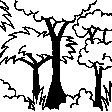
الغابات/ الأراضي الحرجية
زراعة الأشجار، التشجير:
- زراعة محصول واحد غريب
منتجات وخدمات:
- الخشب
- حطب الوقود
- منتجات الغابات الأخرى
- حفظ/حماية الطبيعة
إذا تغير استخدام الأراضي بسبب التقنية، قم بالإشارة إلى استخدام الأرض قبل تنفيذ التقنية:
Crop land garden for sesame growing.
3.3 مزيد من المعلومات حول استخدام الأراضي
إمدادات المياه للأرض التي يتم تنفيذ التقنية عليها:
- بعلية
التعليقات:
improved variety drought resistant and fast maturing
عدد مواسم الزراعة في السنة:
- 1
3.4 مجموعةالإدارة المستدامة للأراضي التي تنتمي إليها هذه التقنية
- إدارة مزارع الغابات
3.5 انتشار التقنية
حدد انتشار التقنية:
- منتشرة بالتساوي على مساحة
إذا كانت التقنية منتشرة بالتساوي على منطقة ما، فحدد المنطقة التقريبية المغطاة:
- < 0.1 كم2 (10 هكتار)
3.6 التدابير التقنية في مجال إلادارة المستدامة للأراضي

التدابير النباتية
- V1: غطاء من الأشجار والشجيرات
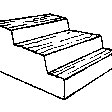
التدابير البنيوية
- S11: غير ذلك
التعليقات:
Firelines to prevent fire out breaks during the dry season.
3.7 الأنواع الرئيسية من تدهور الأراضي التي تناولتها التقنية

تآكل التربة بالمياه
- الوزن(Wt): فقدان التربة السطحية/تآكل السطح
- (Wg):الانجراف الخلجاني/ الخلجان
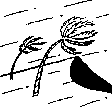
تآكل التربة الناتج عن الرياح
- (Et): فقدان التربة السطحية
- (Ed): الانكماش والترسب
3.8 منع أو حد أو عكس تدهور الأراضي
تحديد هدف التقنية فيما يتعلق بتدهور الأراضي:
- منع تدهور الأراضي
- الحد من تدهور الأراضي
4. المواصفات الفنية، وأنشطة التنفيذ، والمدخلات، والتكاليف
4.1 الرسم الفني للتقنية
4.2 المواصفات الفنية/شروحات الرسم الفني
Teak is planted on a gently sloping natural environment with pitting done at a depth of 3.5 inch Trees are spaced at 3 metres x 3 meters using the following in puts: tree seedlings, wheel barrow hoe, pangas and labour.
4.3 معلومات عامة بخصوص حساب المدخلات والتكاليف
حدد كيفية احتساب التكاليف والمدخلات:
- حسب مساحة تنفيذ التقنية
الإشارة إلى حجم ووحدة المساحة:
6acres
عملة أخرى/ عملة وطنية (حدد):
UGX
اذكر متوسط تكلفة أجر العمالة المستأجرة في اليوم الواحد:
5000shs
4.4 أنشطة التأسيس
| النشاط | نوع التدبير | التوقيت | |
|---|---|---|---|
| 1. | Site clearing for nursery bed | نباتية | dry and wet |
| 2. | Ploughing | نباتية | wet season |
| 3. | Pitting | نباتية | wet season |
| 4. | Planting | نباتية | wet season |
التعليقات:
Constant weeding and slashing is needed.
4.5 التكاليف والمدخلات اللازمة للتأسيس
| تحديد المدخلات | الوحدة | الكمية | التكاليف لكل وحدة | إجمالي التكاليف لكل مدخل | % من التكاليف التي يتحملها مستخدمو الأراضي | |
|---|---|---|---|---|---|---|
| العمالة | Hired labours | Manday | 30,0 | 3000,0 | 90000,0 | 100,0 |
| معدات | Ox-plough | pieces | 1,0 | 280000,0 | 280000,0 | 100,0 |
| معدات | Pangas | pieces | 15,0 | 10000,0 | 150000,0 | 100,0 |
| معدات | Axes | pieces | 7,0 | 15000,0 | 105000,0 | 100,0 |
| معدات | String for lining | bundle | 2,0 | 10000,0 | 20000,0 | 100,0 |
| المواد النباتية | Teak-seedlings | Stem | 6000,0 | 1000,0 | 6000000,0 | 100,0 |
| إجمالي تكاليف إنشاء التقنية | 6645000,0 | |||||
4.6 الصيانة/الأنشطة المتكررة
| النشاط | نوع التدبير | التوقيت/الوتيرة | |
|---|---|---|---|
| 1. | Hiring plantation manager | إدارية | dry and wet |
| 2. | Weeding for 2years after planting | إدارية | wet season |
| 3. | Slashing only after 2years | إدارية | dry and wet |
| 4. | Prunning | إدارية | wet season |
| 5. | Thining | إدارية | wet season |
| 6. | Fenching the plantation | إدارية | dry and wet |
| 7. | Creating firelines during dry seasons | إدارية | dry season |
| 8. | spraying | إدارية | wet and dry season |
4.7 التكاليف والمدخلات اللازمة للصيانة/للأنشطة المتكررة (سنويًا)
| تحديد المدخلات | الوحدة | الكمية | التكاليف لكل وحدة | إجمالي التكاليف لكل مدخل | % من التكاليف التي يتحملها مستخدمو الأراضي | |
|---|---|---|---|---|---|---|
| العمالة | Plantation watchman | acres | 2,0 | 150000,0 | 300000,0 | 100,0 |
| العمالة | Labour for fenching | acres | 8,0 | 100000,0 | 800000,0 | 100,0 |
| معدات | Poles for fenching | acres | 790,0 | 2000,0 | 1580000,0 | 100,0 |
| معدات | Bulb wires | bundle | 4,0 | 150000,0 | 600000,0 | 100,0 |
| معدات | Fellkin (for termites) | bottles | 5,0 | 7000,0 | 35000,0 | 100,0 |
| إجمالي تكاليف صيانة التقنية | 3315000,0 | |||||
5. البيئة الطبيعية والبشرية
5.1 المناخ
هطول الأمطار السنوي
- < 250 مم
- 251- 500 ملم
- 501 - 750ملم
- 1,000-751 ملم
- 1,500-1,100 ملم
- 2,000-1,500 ملم
- 3,000-2,001 ملم
- 4,000-3,100 ملم
- > 4000 ملم
حدد متوسط هطول الأمطار السنوي (إذا كان معروفًا)، بالملليمتر:
850,00
المواصفات/التعليقات على هطول الأمطار:
Moderate rains during wet season
الإشارة إلى اسم محطة الأرصاد الجوية المرجعية المعنية:
Kitgum weather station
المنطقة المناخية الزراعية
- شبه رطبة
Savanna climate
5.2 طوبوغرافيا
متوسط الانحدارات:
- مسطح (0-2%)
- بسيط (3-5%)
- معتدل (6-10%)
- متدحرج (11-15%)
- تلال (16-30%)
- شديدة الانحدار(31-60%)
- فائقة الانحدار (>60%)
التضاريس:
- هضاب/سهول
- أثلام مرتفعة
- المنحدرات الجبلية
- منحدرات التلال
- منحدرات في السفوح
- قاع الوادي
المنطقة الارتفاعية:
- 100-0 متر فوق سطح البحر
- 500-101 متر فوق سطح البحر
- 1,000-501 متر فوق سطح البحر
- 1,500-1,001 متر فوق سطح البحر
- 2,000-1,501 متر فوق سطح البحر
- 2,500-2,100 متر فوق سطح البحر
- 3,000-2,501 متر فوق سطح البحر
- 4,000-3,001 متر فوق سطح البحر
- > 4000 متر فوق سطح البحر
وضح ما إذا كانت التقنية مطبقة على وجه التحديد في:
- غير ذات صلة
التعليقات والمواصفات الإضافية بشأن التضاريس:
Flat landscape supports mechanisation
5.3 التربة
متوسط عمق التربة:
- ضحل جدًا (0-20 سم)
- ضحلة (21-50 سم)
- متوسطة العمق (51-80 سم)
- عميقة (81-120 سم)
- عميقة جدًا (> 120 سم)
قوام التربة (التربة السطحية):
- متوسط ( طميي، سلتي)
قوام التربة (> 20 سم تحت السطح):
- خشن / خفيف (رملي)
المواد العضوية في التربة السطحية:
- متوسطة (1-3%)
5.4 توافر المياه ونوعيتها
منسوب المياه الجوفية:
50-5 م
توافر المياه السطحية:
جيد
نوعية المياه (غير المعالجة):
مياه شرب جيدة
هل تعتبر ملوحة الماء مشكلة؟:
كلا
هل تحدث فيضانات في المنطقة؟:
كلا
تعليقات ومواصفات أخرى بشأن نوعية المياه وكميتها:
The community uses borehole water which is suitable for consumption.
5.5 التنوع البيولوجي
تنوع الأنواع:
- مرتفع
تنوع الموائل:
- مرتفع
التعليقات والمواصفات الإضافية بشأن التنوع البيولوجي:
Variety of wild species exists
5.6 خصائص مستخدمي الأراضي الذين يطبقون التقنية
مستقر أو مرتحل:
- غير المترحل
التوجه السوقي لنظام الإنتاج:
- مختلط (كفاف/ تجاري)
الدخل من خارج المزرعة:
- 10-50% من جميع الإيرادات
المستوى النسبي للثروة:
- متوسط
أفراداً أو مجموعات:
- فرد/أسرة معيشية
مستوى المكننة:
- عمل يدوي
- الجر الحيواني
الجنس:
- نساء
- رجال
عمر مستخدمي الأرضي:
- شباب
- متوسط العمر
5.7 متوسط مساحة الأرض المملوكة أو المستأجرة من قبل مستخدمي الأراضي الذين يطبقون التقنية
- < 0.5 هكتارا
- 0.5 - 1 هكتار
- 1 -2 هكتار
- 2 - 5 هكتار
- 5 - 15 هكتار
- 15 - 50 هكتار
- 50 - 100هكتار
- 500-100 هكتار
- 1,000-500 هكتار
- 10,000-1,000 هكتار
- > 10,000 هكتار
هل يعتبر هذا نطاقًا صغيرًا أو متوسطًا أو واسعا (في إشارة إلى السياق المحلي)؟:
- على نطاق متوسط
التعليقات:
More land can be used for teak growing.
5.8 ملكية الأراضي، وحقوق استخدام الأراضي، وحقوق استخدام المياه
ملكية الارض:
- فردية، لا يوجد سند ملكية
حقوق استخدام الأراضي:
- فردي
حقوق استخدام المياه:
- مجتمعي (منظم)
التعليقات:
Land user has to acquire land title for security purposes.
5.9 الوصول إلى الخدمات والبنية التحتية
الصحة:
- ضعيف
- معتدل
- جيد
التعليم:
- ضعيف
- معتدل
- جيد
المساعدة التقنية:
- ضعيف
- معتدل
- جيد
العمل (على سبيل المثال خارج المزرعة):
- ضعيف
- معتدل
- جيد
الأسواق:
- ضعيف
- معتدل
- جيد
الطاقة:
- ضعيف
- معتدل
- جيد
الطرق والنقل:
- ضعيف
- معتدل
- جيد
مياه الشرب وخدمات الصرف الصحي:
- ضعيف
- معتدل
- جيد
الخدمات المالية:
- ضعيف
- معتدل
- جيد
6. الآثار والتصريحات الختامية
6.1 الآثار التي أظهرتها التقنية في الموقع
الآثار الاجتماعية والاقتصادية
الإنتاج
إنتاج الخشب
الكمية قبل الإدارة المستدامة للأراضي:
low
الكمية بعد الإدارة المستدامة للأراضي:
high
التعليقات/ حدد:
Fuel wood obtained from teak pruned branches
جودة الغابات/الأراضي الحرجية
الكمية قبل الإدارة المستدامة للأراضي:
low
الكمية بعد الإدارة المستدامة للأراضي:
high
التعليقات/ حدد:
Shrub vegetation maintained with no cultivation taking place at the technology site
تنوع المنتج
الكمية قبل الإدارة المستدامة للأراضي:
Low
الكمية بعد الإدارة المستدامة للأراضي:
High
التعليقات/ حدد:
Hard wood timber provided for construction purposes
توليد الطاقة
الكمية قبل الإدارة المستدامة للأراضي:
low
الكمية بعد الإدارة المستدامة للأراضي:
high
التعليقات/ حدد:
Woodfuel provided from the pruned branches
الدخل والتكاليف
دخل المزرعة
الكمية قبل الإدارة المستدامة للأراضي:
low
الكمية بعد الإدارة المستدامة للأراضي:
high
التعليقات/ حدد:
From the sale of branches, poles and timbers sold to generate income
تنوع مصادر الدخل
الكمية قبل الإدارة المستدامة للأراضي:
low
الكمية بعد الإدارة المستدامة للأراضي:
high
التعليقات/ حدد:
Income from poles and timber production other than only crop
عبء العمل
الكمية قبل الإدارة المستدامة للأراضي:
high
الكمية بعد الإدارة المستدامة للأراضي:
low
التعليقات/ حدد:
Teak forests are easy to maintain since the dense canopy kills weed underneath
الآثار الاجتماعية والثقافية
المعرفة بالإدارة المستدامة للأراضي/تدهور الأراضي
الكمية قبل الإدارة المستدامة للأراضي:
low
الكمية بعد الإدارة المستدامة للأراضي:
high
التعليقات/ حدد:
trees conserve soil and biodiversity
الآثار الايكولوجية
التربة
رطوبة التربة
الكمية قبل الإدارة المستدامة للأراضي:
low
الكمية بعد الإدارة المستدامة للأراضي:
high
التعليقات/ حدد:
High water retention in the soil
غطاء التربة
الكمية قبل الإدارة المستدامة للأراضي:
low
الكمية بعد الإدارة المستدامة للأراضي:
high
فقدان التربة
الكمية قبل الإدارة المستدامة للأراضي:
High
الكمية بعد الإدارة المستدامة للأراضي:
low
التعليقات/ حدد:
Forest cover reduces the loss by binding the soil partials together
التنوع البيولوجي: الغطاء النباتي، الحيوانات
الغطاء النباتي
الكمية قبل الإدارة المستدامة للأراضي:
low
الكمية بعد الإدارة المستدامة للأراضي:
high
التعليقات/ حدد:
Dense vegetation cover
الكتلة الحيوية/ طبقة الكربون فوق التربة
الكمية قبل الإدارة المستدامة للأراضي:
low
الكمية بعد الإدارة المستدامة للأراضي:
high
التعليقات/ حدد:
Teak plantation acts as carbon sink
التنوع النباتي
الكمية قبل الإدارة المستدامة للأراضي:
low
الكمية بعد الإدارة المستدامة للأراضي:
high
التعليقات/ حدد:
Different plant species like grass, shrubs exist inside the forest
تنوع الموائل
الكمية قبل الإدارة المستدامة للأراضي:
Low
الكمية بعد الإدارة المستدامة للأراضي:
high
التعليقات/ حدد:
Snakes, rabbits and other creators survive within the plantation
الحد من مخاطر المناخ والكوارث
آثار الجفاف
الكمية قبل الإدارة المستدامة للأراضي:
low
الكمية بعد الإدارة المستدامة للأراضي:
high
التعليقات/ حدد:
Improved trees variety fast maturing and drought resistant
انبعاث الكربون والغازات المسببة للاحتباس الحراري
الكمية قبل الإدارة المستدامة للأراضي:
high
الكمية بعد الإدارة المستدامة للأراضي:
low
التعليقات/ حدد:
Forest act as carbon sink
سرعة الرياح
الكمية قبل الإدارة المستدامة للأراضي:
high
الكمية بعد الإدارة المستدامة للأراضي:
low
التعليقات/ حدد:
Trees acts as wind breaks
المناخ الموضعي (مايكرو)
الكمية قبل الإدارة المستدامة للأراضي:
low
الكمية بعد الإدارة المستدامة للأراضي:
high
التعليقات/ حدد:
Forest modify the micro climate through evapotranspiration
6.3 تعرض التقنية وحساسيتها لتغير المناخ التدريجي والظواهر المتطرفة/الكوارث المرتبطة بالمناخ (كما يراها مستخدمو الأراضي)
تغير مناخ تدريجي
تغير مناخ تدريجي
| الموسم | نوع التغير المناخي/ المتطرف | كيف تتعامل التقنية مع ذلك؟ | |
|---|---|---|---|
| درجة الحرارة السنوية | زيادة | باعتدال | |
| درجة الحرارة الموسمية | فصل جاف | زيادة | باعتدال |
| هطول الأمطار السنوي | انخفاض | باعتدال | |
| هطول الأمطار الموسمية | موسم الرطوبة/ الأمطار | انخفاض | باعتدال |
الظواهر المتطرفة / الكوارث المرتبطة بالمناخ
الكوارث الجوية
| كيف تتعامل التقنية مع ذلك؟ | |
|---|---|
| عاصفة ممطرة محلية | باعتدال |
| عاصفة هوائية محلية | باعتدال |
الكوارث المناخية
| كيف تتعامل التقنية مع ذلك؟ | |
|---|---|
| جفاف | باعتدال |
| حريق الغابة | ليس جيدا |
| حريق الأرض | ليس جيدا |
الكوارث البيولوجية
| كيف تتعامل التقنية مع ذلك؟ | |
|---|---|
| أمراض وبائية | باعتدال |
| الإصابة بالحشرات/الديدان | باعتدال |
6.4 تحليل التكلفة والعائد
كيف يمكن مقارنة العوائد نسبة لتكاليف الإنشاء (من وجهة نظر مستخدمي الأراضي)؟
عوائد قصيرة الأجل:
سلبي قليلا
عوائد طويلة الأجل:
ايجابي جدا
كيف تتم مقارنة العوائدمع كلفة الصيانة/التكاليف المتكررة (من وجهة نظر مستخدمي الأراضي)؟
عوائد قصيرة الأجل:
سلبي قليلا
عوائد طويلة الأجل:
ايجابي جدا
التعليقات:
After five years the poles can be harvested for construction and income purposes
6.5 اعتماد التقنية
- 1-10%
إذا كان متاحًا، قم بتحديد الكمية (عدد الأسر المعيشية و/أو المساحةالمغطاة):
02
من بين جميع الذين تبنوا التقنية، كم عدد الذين فعلوا ذلك بشكل تلقائي، أي دون تلقي أي حوافز مادية/مدفوعات؟:
- 100-90%
6.6 التكيف
هل تم تعديل التقنية مؤخرًا لتتكيف مع الظروف المتغيرة؟:
كلا
6.7 نقاط القوة / المزايا / الفرص التي توفرها التقنية
| نقاط القوة/ المزايا/ الفرص من وجهة نظر مستخدمي الأراضي |
|---|
| The technology is good at providing income from sale of branches, timber and poles. |
| The technology is good at creating good neighborhood since it marks boundaries clearly. |
| The technology is good at modifying micro climate. |
| Very good at improving biodiversity. |
| نقاط القوة/ المزايا/ الفرص من وجهة نظر جامع المعلومات أو غيره من الاشخاص الرئيسيين لمصدر المعلومات |
|---|
| The technology prevents land conflict since firelines are established to reduce fire out breaks. |
| Dry leaves provided by teak as litter is good for mulching hence increasing productivity. |
| The technology is good at providing cool and pleasant environment. |
| Initial costs of implementation high |
6.8 نقاط ضعف / مساوىء / مخاطر التقنية وسبل التغلب عليها
| نقاط الضعف/ المساوىء/ المخاطر من وجهة نظر مستخدم الأراضي | كيف يمكن التغلب عليها؟ |
|---|---|
| Fire outbreak during the dry season | Creating fire lines during dry season |
| Negative attitude from other community members | Encouraging tree plantation among community members. |
| نقاط الضعف/ المساوىء/ المخاطر من وجهة نظر جامع المعلومات أو غيره من الاشخاص الرئيسيين لمصدر المعلومات | كيف يمكن التغلب عليها؟ |
|---|---|
| Teak takes long to mature | At least poles can be sold after five years |
7. المراجع والروابط
7.1 طرق جمع/مصادر المعلومات
- زيارات ميدانية، مسوحات ميدانية
01
- مقابلات مع مستخدمي الأراضي
01
7.3 روابط للمعلومات ذات الصلة المتوفرة على الإنترنت
العنوان/الوصف:
Forest plantations and woodlots in Kenya
عنوان الرابط URL:
https://www.sifi.se/wp-content/uploads/2012/02/Forest-plantations-and-woodlots-in-Kenya.pdf
الروابط والوحدات المواضيعية
توسيع الكل طي الكلالروابط
لا يوجد روابط
الوحدات المواضيعية
لا يوجد وحدات مواضيعية


